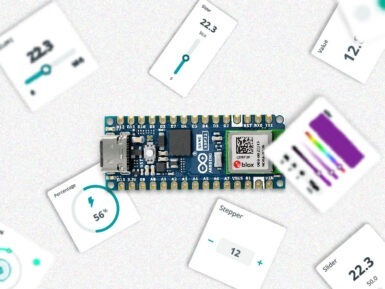
USB-C to HDMI multiport adapter with ethernet and USB hub
USB-C Multiport adapter | HDMI | 4K | 60W | PD Pass Through | 3x USB-A | LAN | 0.15m | Aluminium
Overview
The AC7042 USB-C 3.2 Gen1 4K Multiport Dock turns a notebook into a complete work station by connecting only one flexible USB-C cable.
This multiport dock extends the notebook with a 4K monitor via HDMI, Gigabit Ethernet connection, three USB-A ports and a USB-C pass-through charging port with power delivery (max. 60W) support. This solid aluminium multiport dock is USB powered, no external power supply is needed. Please make sure the USB-C port of the notebook supports DP Alt Mode.
Turn a notebook into a work station with only one foldable USB-C cable
Connect one 4K@30Hz monitor to the notebook via the HDMI port of the AC7042. The Multiport Dock has a Gigabit LAN networking port and extends the notebook with three additional USB-A 3.2 Gen1 ports. The flexible cable can be stored into the dock.
- Connect your notebook with USB-C to a 4K@30Hz HDMI monitor/TV
- 3x USB-A 3.2 Gen1 and 1x Gigabit ethernet port
- USB-C Pass-through port with power delivery support to provide the correct power and current for your notebook
- Solid aluminium design with foldable USB-C cable
- USB powered; Plug and Play: A USB-C port with DisplayPort Alternate Mode (DP Alt Mode) is needed
Tech specs
| Product category | USB-C multiport adapters |
| USB Type-C | Yes |
| Connection cable connectors | USB C |
| Connection cable | 12 cm |
| Connection cable type | Fixed |
| Power Delivery ports | 1 |
| Power Delivery pass-through | Yes |
| Power Delivery device charging | Yes |
| Max. Power Delivery power | 60 W |
| Supported Power Delivery profiles | 12.0V up to 2.58A, 15.0V up to 2.67A, 20.0V up to 3.0A, 5.0V up to 2.0A, 9.0V up to 2.44A |
| Connections | HDMI, RJ45, USB |
| Peripheral ports | USB (x3), USB C |
| USB 3.2 Gen 1 - SuperSpeed 5 Gbps peripheral ports | USB (x3) |
| Needed on laptop | One free USB 3.2 Gen 1 - SuperSpeed (USB 3.0) C port with DisplayPort alternate mode |
| Display ports | HDMI |
| 4K compatible | Yes |
| Max. resolution @ 30Hz | 4096 x 2160 |
| Max. resolution @ 60Hz | 1920 x 1080 |
| Number of displays | 1 |
| Chroma sampling | 4:04:04 |
| Video signal | HDMI |
| Video specification | HDMI High Speed |
| Video version | HDMI 1.4 |
| LAN speed | 10/100/1000 Mbps |
| Chipset | Realtek USB GbE Ethernet |
| Power supply | Bus powered, USB powered |
Get Inspired
My project has a Nodemcu ESP8266 which is controlling a 7-segment display through the http server using html form.

… remote monitoring and control. 2. Embed a web server in the device Embedding a web server inside the IoT device allows you to visualize the data using a web browser. It requires the device to have network connectivity, and it is usually implemented connecting the device to a Wi-Fi access point or with the device creating its own WiFi hotspot. Although creating your own web server implementation can be done, one of the most widespread solutions is to make use of the library ESPAsyncWebServer. It allows your IoT device to serve custom HTML pages presenting the data. This is a very flexible and customizable solution, yet complex and mostly suitable for skilled users. There are plenty of insightful examples like the following ones: ESP32 Web Server - Arduino IDE | Random Nerd TutorialsArduino Project Hub - NodeMCU ESP8266 AJAX Enabled Web Server Arduino Project Hub - WiFi Robot Car / RC Car NodeMCU Web ServerESP32 Web Server: Display Sensor Readings in Gauges | Random Nerd Tutorials The scope of this solution is typically local — you need to be on the same network as the device — although with a more advanced configuration by enabling port forwarding in the router, the device could be accessed remotely from anywhere. One of the main advantages is its low latency, as the data shown in the web page comes directly from the device without any processing. On the other hand, it is a solution that requires a high programming skill level and additionally, due to the immutable nature of the firmware, every change in a dashboard requires code recompilation and firmware reflashing. Furthermore, embedding a web server or a Bluetooth stack within the device can be resource-intensive. This may limit the device's capabilities or require a more powerful microcontroller, increasing both cost and complexity. 3. Send data to an external system with plotting capabilities IoT devices can send data to external systems using different protocols, such as
FAQs
Is the notebook being charged via the USB-C port?
The AC7042 supports Power Delivery Pass-Through 60W. Once connected to the multiport dock, the notebook gets its power via the USB-C PD Pass-Through port. The dock is a plug and play device, only a USB-C port with DisplayPort Alternate Mode (DP Alt Mode) is needed.








